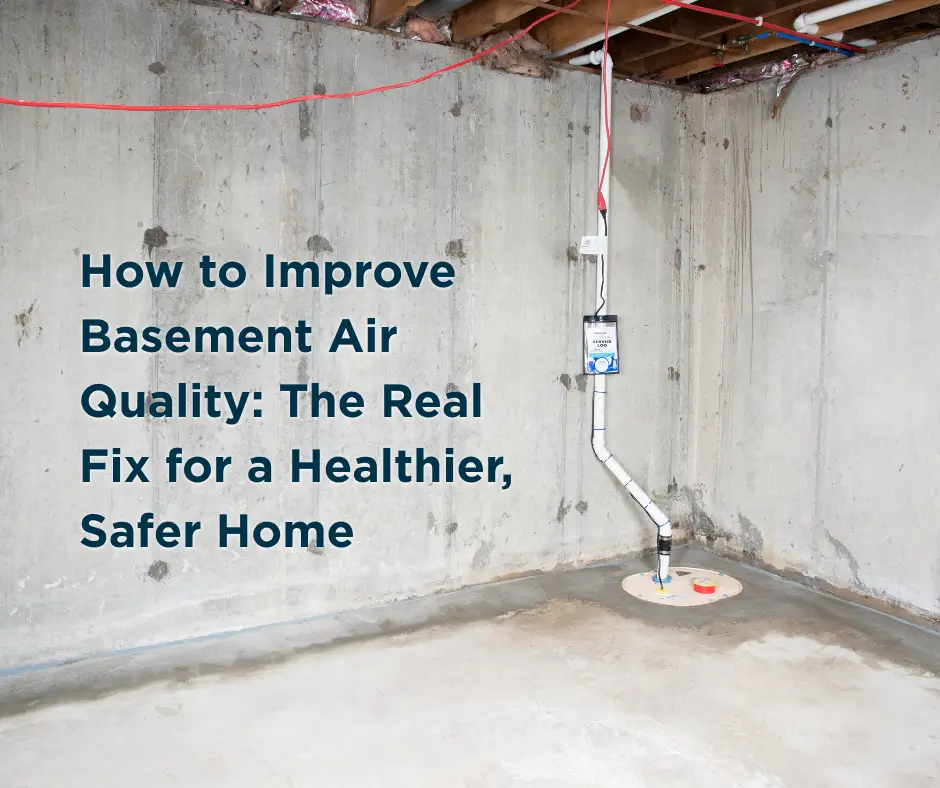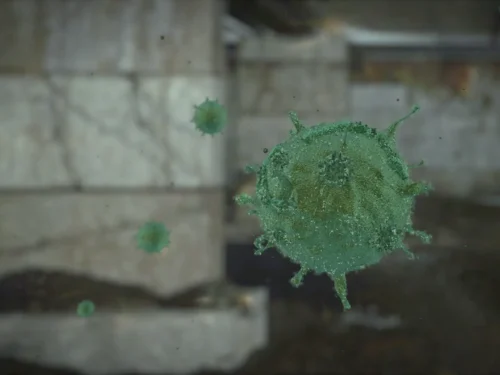Ever walked into your basement and thought, “What is that smell?”
Or noticed the air feels damp, heavy, or just… weird?
Here’s the thing: your basement air doesn’t stay in the basement.
It travels.
It rises.
And it spreads through your entire home—whether you like it or not.
So if that air is full of dust, moisture, mold, or anything else you wouldn’t want to breathe… it’s showing up in your living room, your bedroom, even your kid’s playroom.
But it doesn’t have to be like that always! You can fix it. And you don’t need to rip your house apart or spend months doing it.
This guide will show you how to improve basement air quality the right way—with clear, simple actions that protect your home, your health, and your peace of mind.
First: Why Does Basement Air Matter So Much?
Most people think of their basement like a storage unit—down, dark, out of sight. But your HVAC system and the stack effect (warm air rises, pulling up cold air from below) say otherwise.
Here’s what that means:
- Your basement acts like a lung for your house.
- Whatever is in the basement air—mold spores, allergens, radon, VOCs—gets pulled into your living space.
- So every breath in your home is influenced by what’s going on down there.
According to the EPA, indoor air can be 2 to 5 times more polluted than outdoor air. And if your basement is not clean and dry, it’s one of the main culprits.
The 5 Silent Killers of Basement Air Quality
Let’s break down the actual basement air quality problems hiding in most basements—and what’s making your air worse.
1. High Humidity and Moisture
Basements are naturally damp. They’re surrounded by soil, concrete, and little airflow.
Even a little moisture hanging around creates that classic musty smell. It also feeds mold, attracts pests, and makes the air feel uncomfortable.
Fact: Mold can begin growing in just 24-48 hours in a damp environment.
2. Mold and Mildew Spores
Mold isn’t just gross—it’s toxic. It releases spores that trigger asthma, allergies, fatigue, and even neurological problems with long-term exposure.
You might not see it. But you’ll smell it.
3. Stale, Unventilated Air
Basements often have no windows or open airflow. So bad air just… stays.
This traps odors, gases, and airborne particles that rise with the stack effect.
4. Dust, Pet Dander, VOCs
Cleaning products, paints, old carpet glue, stored chemicals—they all release volatile organic compounds (VOCs).
These hang in the air and get breathed in. You won’t smell them, but they’re there.
5. Radon Gas
This one’s deadly serious. Radon is a radioactive gas that leaks from the soil into basements.
It’s odorless, invisible, and the #2 cause of lung cancer in the U.S. (after smoking).
Every home in Richmond should be tested.
How to Improve Air Quality in Basement: The Real Fix (Step-by-Step)
Now let’s build your action plan.
These steps on how to improve air quality in the basement are proven to work—and when done right, they can completely change how your basement feels and smells.
Step 1: Remove the Moisture at the Source
Moisture is the root of every problem. If you skip this part, everything else is just a bandaid.
Here’s what works:
- Dehumidifier: Not the plug-in kind from the store. You need a self-draining, basement-rated system that keeps humidity at 45-50%.
- Sump pump: If your basement has ever had standing water, install one now. Include a battery backup in case of power loss during storms.
- Drainage system: French drains, gutter downspout extensions, and sloping your yard away from the foundation are key.
- Crawl space encapsulation: Seals your crawl space with a vapor barrier and prevents all ground moisture from rising up.
👉 Read our blog to know the perfect humidity level for basements.
Step 2: Ventilate and Circulate
Stale air is polluted air. So get it moving.
Solutions:
- Energy Recovery Ventilators (ERVs): Bring in filtered outside air while removing stale indoor air—without wasting energy.
- Inline exhaust fans: Affordable, effective way to push bad air out.
- Open basement doors/windows when possible: Even 15 minutes a day helps—but only when humidity outside is low.
Step 3: Clean the Air You Keep
Once moisture and ventilation are under control, it’s time to know how to clean air in the basement.
Use layered filtration:
- HEPA filters on HVAC or standalone units (traps 99.97% of particles)
- Electronic air cleaners (great for bacteria, smoke, and odors)
- UV purifiers that kill mold spores and viruses in the air
Pro Tip: Change your HVAC filters every 2-3 months—not once a year. It makes a huge difference in the basement air quality.
Step 4: Test and Monitor
Don’t guess. Know.
- Radon Test Kit: Under $30, could save your life. If levels are high (4.0+ pCi/L), install a mitigation system.
- Air Quality Monitor: Look for models that track VOCs, humidity, PM2.5 (dust), and CO2. The info will guide your upgrades.
Step 5: Waterproof to Win Long-Term
Even if your basement feels dry today, it only takes one storm to start the cycle again.
Waterproofing = permanent peace of mind.
Includes:
- Interior/exterior drainage
- Crack repair
- Sump pump system
- Wall and floor sealants
- Foundation grading
👉 Learn how to get fresh air in basement and keep your basement dry year-round.
Let a Pro Handle It (Before It Costs You More)
At VFS, we’ve helped thousands of homeowners in Richmond and surrounding areas take control of their basement air—and their home’s health.
We don’t do surface-level fixes. We stop the root cause.
If your basement is:
- Musty
- Humid
- Showing mold spots
- Giving off strange smells
- Or just feels “off”…
Don’t wait. Schedule your free Richmond basement inspection today.
Whether you need:
- Foundation Repair
- Crawlspace Repair
- Structural Repair
- Or Full Basement Waterproofing
We’ve got your back and answers to all your questions about how to improve basement air quality.
Contact us now and we’ll reach out within 24 hours to schedule your free, no-obligation inspection.
This is your home. Let’s make sure it’s safe from the ground up.









